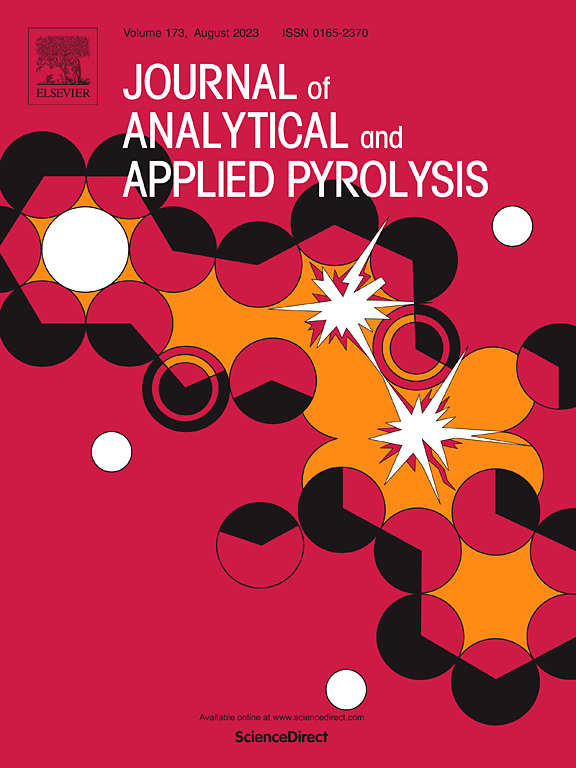Pyrolysis behavior of silicone aerogels with different side groups through experimental and ReaxFF MD
IF 5.8
2区 化学
Q1 CHEMISTRY, ANALYTICAL
引用次数: 0
Abstract
Silicone materials, widely used as ablation thermal protection materials, have complex degradation mechanisms at ultra-high temperatures that remain poorly understood. In this work, we investigate the pyrolysis behavior of silicone aerogels through experiments and ReaxFF molecular dynamics (ReaxFF MD) simulations, revealing the impact of silicone side groups on their high-temperature stability. The introduction of methyl, vinyl, and phenyl groups through modifying the crosslinker side chains in aerogels, due to their steric hindrance effects and higher bond energies, inhibits the occurrence of cleavage reactions, thereby improving the thermal stability of the material and providing a basis for material design. We obtained kinetic parameters of the pyrolysis process, including activation energy, pre-exponential factor, and reaction mechanism functions, through thermogravimetric analysis, thereby establishing an accurate and reliable decomposition kinetics model. Fast pyrolysis experiments, alongside ReaxFF MD simulations, systematically elucidated the pathways for forming of gaseous, liquid, and solid products during thermal decomposition. Pyrolysis is primarily triggered by the cleavage of Si-C bonds, leading to the cyclization of the Si-O-Si main chain to form cyclic siloxanes. The cleavage of small molecules undergoes a rearrangement reaction, ultimately resulting in the formation of amorphous silica. This study enhances our understanding of the pyrolysis mechanisms of silicone aerogels and provides theoretical insights for improving their thermal stability.
通过实验和ReaxFF MD研究不同侧基硅酮气凝胶的热解行为
有机硅材料被广泛用作烧蚀热保护材料,但其在超高温下的复杂降解机理仍鲜为人知。在这项工作中,我们通过实验和 ReaxFF 分子动力学(ReaxFF MD)模拟研究了有机硅气凝胶的热解行为,揭示了有机硅侧基对其高温稳定性的影响。通过改变气凝胶中的交联剂侧链引入甲基、乙烯基和苯基基团,由于其立体阻碍效应和较高的键能,可抑制裂解反应的发生,从而提高材料的热稳定性,为材料设计提供依据。我们通过热重分析获得了热解过程的动力学参数,包括活化能、预指数因子和反应机理函数,从而建立了准确可靠的分解动力学模型。快速热解实验和 ReaxFF MD 模拟系统地阐明了热分解过程中形成气态、液态和固态产物的途径。热分解主要由 Si-C 键的裂解引发,导致 Si-O-Si 主链环化,形成环状硅氧烷。小分子的裂解会发生重排反应,最终形成无定形二氧化硅。这项研究加深了我们对有机硅气凝胶热解机理的理解,并为提高其热稳定性提供了理论依据。
本文章由计算机程序翻译,如有差异,请以英文原文为准。
求助全文
约1分钟内获得全文
求助全文
来源期刊
CiteScore
9.10
自引率
11.70%
发文量
340
审稿时长
44 days
期刊介绍:
The Journal of Analytical and Applied Pyrolysis (JAAP) is devoted to the publication of papers dealing with innovative applications of pyrolysis processes, the characterization of products related to pyrolysis reactions, and investigations of reaction mechanism. To be considered by JAAP, a manuscript should present significant progress in these topics. The novelty must be satisfactorily argued in the cover letter. A manuscript with a cover letter to the editor not addressing the novelty is likely to be rejected without review.

 求助内容:
求助内容: 应助结果提醒方式:
应助结果提醒方式:


